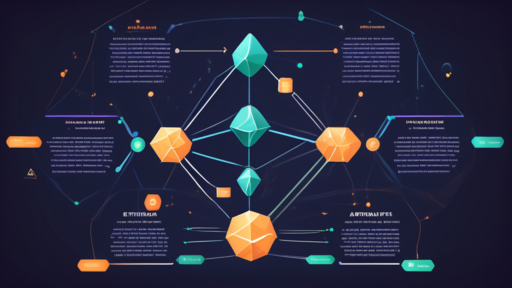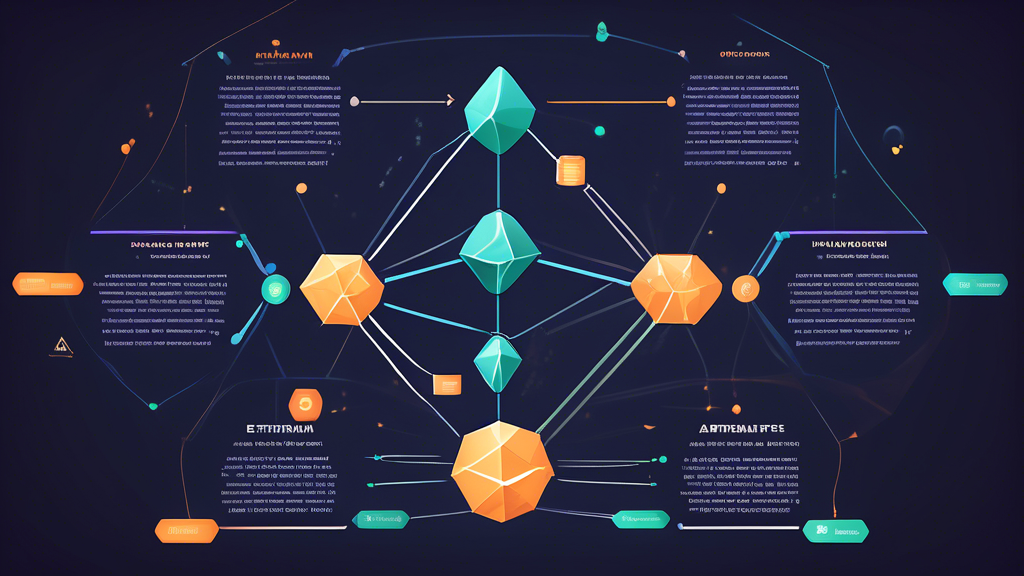**Layer-2 Solutions: Unlocking the Power of Ethereum and Beyond**
Imagine a crowded highway where traffic jams slow your progress. Layer-2 solutions are the express lanes of the blockchain world, enabling transactions to zoom past bottlenecks and congestion.
The Ethereum blockchain, the bustling hub of decentralized applications, has been struggling under the weight of its own success. Transactions can take forever and cost a fortune. Layer-2 solutions come to the rescue, providing a smoother, faster, and cheaper way to interact with the blockchain.
In this article, we’ll dive into the world of Layer-2 solutions, explaining what they are, how they work, and why they’re poised to revolutionize the blockchain industry. From off-chain transactions to state channels and rollups, we’ll cover the alphabet soup of Layer-2 mechanisms and their game-changing benefits.
Get ready to unlock the full potential of Ethereum and beyond with the ultimate guide to Layer-2 solutions!
**1. Understanding Layer-2 Solutions: Unlocking the Future of Blockchain**
**Introduction:**
Imagine Ethereum as a bustling city, where thousands of transactions happen every second. But just like in any crowded metropolis, traffic can sometimes grind to a halt, leading to slow transaction processing and sky-high fees. Enter Layer-2 solutions: the ingenious bypasses that let Ethereum handle even more transactions without breaking a sweat.
**Challenges for Ethereum and Blockchain Networks:**
Ethereum is a true blockchain heavyweight, but its popularity also brings some challenges. As more people use it, the network becomes congested, transaction fees soar, and transactions can take an eternity to confirm. This is where Layer-2 solutions come to the rescue.
**The Role of Layer-2 Solutions:**
Think of Layer-2 solutions as additional lanes on the blockchain highway, allowing transactions to flow seamlessly without adding to the congestion on the main Ethereum network. They act as a bridge between the blockchain and users, processing transactions off-chain and only submitting the final results to the main blockchain, significantly reducing the load on Ethereum.

**Types and Mechanisms of Layer-2 Solutions**
Like skilled architects expanding an existing building, Layer-2 solutions offer innovative ways to enhance the Ethereum network without altering its core structure. These clever designs come in various forms, each with its unique mechanisms and benefits.
**Off-Chain Solutions: Extending the Capabilities**
Off-chain solutions, like efficient assistants in a bustling office, handle transactions outside the main Ethereum blockchain. Think of them as side rooms where complex computations can occur without cluttering the main hallway. This approach offloads the heavy lifting from the blockchain, resulting in faster transactions and lower costs.
**State Channels: Private Transactions, Public Validation**
Imagine a private meeting room where a group of participants can conduct transactions secretly. That’s the world of state channels. Once the meeting concludes, they return to the main blockchain to record the final outcome. State channels offer lightning-fast transactions and near-zero costs, making them ideal for games and private marketplaces.
**Sidechains: Independent Blockchains, Connected to the Main Network**
Consider sidechains as parallel universes that run alongside the Ethereum blockchain. They operate independently, with their own set of rules and validators. Bridges connect these sidechains to the main Ethereum blockchain, allowing assets to flow between them seamlessly. Sidechains offer flexibility and customization, making them suitable for specific use cases like enterprise applications.
**Rollups: Packing Transactions into a Neat Bundle**
Rollups work like efficient postal workers, bundling multiple transactions into a single package before sending them to the main blockchain. This roll-up process reduces the number of transactions on the blockchain, freeing up space for more important matters. Optimistic rollups assume the transactions are valid and only challenge them if necessary, while ZK-rollups provide mathematical proof of validity, ensuring trustless verification.
**On-Chain Solutions: Utilizing the Blockchain’s Power**
On-chain solutions, unlike their off-chain counterparts, operate directly on the Ethereum blockchain. They modify the blockchain’s behavior or introduce new features to enhance scalability.
**Plasma: Scaling Through Subchains**
Plasma is like a tree with multiple branches. It creates child chains, or subchains, that handle transactions and report back to the parent chain. This layered structure allows for massive scalability, potentially supporting millions of transactions per second.
**Sharding: Dividing the Blockchain into Segments**
Sharding is a brilliant concept that divides the Ethereum blockchain into smaller, more manageable pieces called shards. Each shard processes transactions independently, reducing the workload for individual nodes. This approach is akin to having multiple computers working on different sections of a puzzle, resulting in faster consensus.
**Conclusion:**
The realm of Layer-2 solutions is a dynamic and ever-evolving landscape, with each mechanism offering its own unique advantages. From off-chain solutions that expand the network’s capabilities to on-chain solutions that harness the blockchain’s power, Layer-2 solutions are revolutionizing Ethereum and shaping the future of blockchain technology.

Benefits and Adoption of Layer-2 Solutions: Unlocking the Potential of Ethereum and Beyond
Layer-2 solutions are emerging as game-changers, providing a much-needed lifeline to Ethereum and other blockchain networks struggling under the weight of congestion and high transaction costs. These innovative solutions have the power to transform the blockchain landscape, enabling a future where transactions are processed swiftly, costs are kept to a minimum, and user experiences are seamless.
Increased Scalability and Reduced Transaction Costs: A Lifeline for Ethereum
The primary benefit of Layer-2 solutions lies in their ability to dramatically increase the scalability of blockchain networks. By moving transactions off-chain, Layer-2 solutions free up the main chain, allowing it to handle more complex transactions and maintain security. This increased efficiency translates into significantly reduced transaction costs, making Ethereum and other blockchain networks more accessible and cost-effective for a wider range of users.
Improved User Experience and Efficiency: A Smoother Ride on the Blockchain
Layer-2 solutions don’t just improve scalability; they also enhance the user experience. By reducing transaction times and costs, Layer-2 solutions make interacting with blockchain networks faster, cheaper, and more enjoyable. This improved efficiency encourages greater adoption and empowers users to explore the full potential of decentralized applications.
Case Studies: Success Stories of Layer-2 Implementations
The benefits of Layer-2 solutions are not just theoretical; they have already been proven in real-world implementations. Polygon, a Layer-2 scaling solution for Ethereum, has processed over 2 billion transactions, demonstrating its ability to handle high transaction volumes while significantly reducing costs. Other successful Layer-2 projects include Arbitrum and Optimism, both of which have gained significant traction in the DeFi space.
Future Trends and Potential Impact on the Blockchain Industry
As Layer-2 solutions continue to mature, their impact on the blockchain industry is likely to be profound. Increased scalability, reduced costs, and enhanced user experiences will drive wider adoption of blockchain technology, opening doors to new applications and use cases. Layer-2 solutions have the potential to transform the way we interact with decentralized networks, making them accessible to a broader audience and paving the way for the mainstream adoption of blockchain technology.
**Conclusion: The Future of Blockchain Scaling**
Layer-2 solutions have emerged as the superheroes of blockchain, unlocking new possibilities for Ethereum and beyond. They’re like the secret weapons that take the weight off the blockchain’s shoulders, allowing it to soar to new heights.
These scaling solutions are like a magical portal that takes transactions off the main blockchain highway and onto a parallel road, where they can speed along without traffic jams. The result? Faster, cheaper, and more user-friendly blockchain experiences.
As more developers embrace Layer-2 solutions, we’re witnessing a transformation in the blockchain landscape. Projects are no longer limited by the constraints of the base chain, allowing them to unleash their full potential and innovate like never before.
Layer-2 is not just about scaling; it’s about opening up a world of possibilities for blockchain technology. From decentralized gaming and social media to complex financial applications, the future of blockchain is built on the foundation of Layer-2 solutions.
So, buckle up and prepare for an exciting ride as Layer-2 technologies continue to evolve and revolutionize the world of blockchain. The adventure has just begun, and the future looks brighter than ever before.






